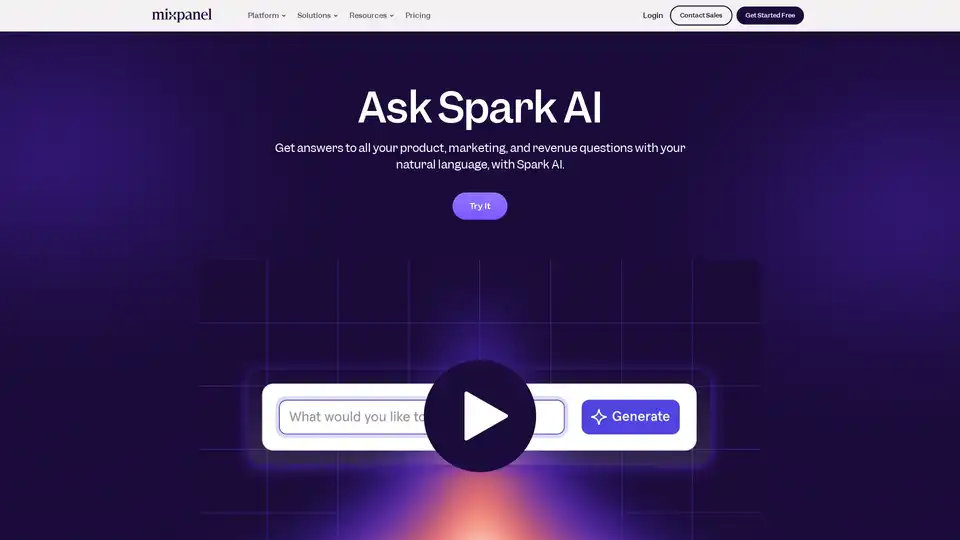
Spark AI
Overview of Spark AI
What is Spark AI?
Spark AI is an innovative feature integrated into the Mixpanel platform, designed to revolutionize how teams interact with product data. Powered by generative AI, Spark AI allows users to pose natural language questions about their analytics data, transforming complex queries into clear, actionable reports. Whether you're analyzing user engagement, marketing performance, or revenue metrics, Spark AI bridges the gap between data and decision-making by eliminating the need for technical expertise like SQL coding or manual event identification.
Launched as part of Mixpanel's suite of analytics tools, Spark AI is particularly valuable for product managers, marketers, and analysts who want quick insights without delving into backend systems. It supports a wide range of questions, from basic user behavior trends to deeper funnel optimizations, making data accessible to non-technical team members across organizations.
How Does Spark AI Work?
At its core, Spark AI leverages advanced generative AI models to interpret user queries in everyday language. When you ask a question like "How many users engaged with our new feature last week?" Spark AI processes the input by mapping it to relevant data events within your Mixpanel warehouse. It then generates visualizations, charts, and summaries that directly answer your query.
The process is straightforward and iterative:
- Input Your Question: Type a natural language prompt into the Spark AI interface, accessible directly within the Mixpanel dashboard.
- AI Processing: The system uses generative AI to analyze connected data sources, such as product analytics, web analytics, or mobile app metrics, pulling from synced warehouses.
- Output Generation: Receive an instant report with charts, tables, and insights. For instance, it might produce a cohort analysis showing user retention or a breakdown of revenue by acquisition channel.
- Follow-Up Queries: Dive deeper by asking follow-up questions, like "Compare this to the previous month," refining your analysis on the fly.
- Transparency Check: Click into any visualization to see the underlying data logic, events queried, and how the AI arrived at the results—ensuring trust and verifiability.
This workflow is built on secure, privacy-focused AI integrations, with Mixpanel emphasizing data protection through features like encrypted connections and compliance with industry standards. No external AI models are exposed to your proprietary data, keeping everything in-house.
Key Features of Spark AI
Spark AI stands out with several powerful capabilities that enhance its utility in real-world analytics scenarios:
- Natural Language Interface: Chat-style interaction makes it intuitive, supporting questions on product KPIs, user journeys, ecommerce metrics, and more.
- Actionable Reports and Visualizations: Automatically creates charts, graphs, and tables tailored to your query, ready for sharing or exporting.
- Iterative Analysis: Build on initial responses with follow-ups, allowing for dynamic exploration without starting over.
- Data Transparency: Reveal the 'behind-the-curtain' mechanics, including queried events and SQL equivalents, for users who want to learn or audit.
- Broad Compatibility: Integrates seamlessly with Mixpanel's ecosystem, including Product Analytics, Web Analytics, Mobile Analytics, and Warehouse Connectors.
These features are especially effective when combined with tools like Session Replay for qualitative insights or Metric Trees for strategic mapping.
Use Cases for Spark AI
Spark AI shines in diverse applications, helping teams accelerate growth and optimization:
- User Acquisition and Engagement: Ask "Which marketing campaigns drove the most new users?" to get instant breakdowns, enabling data-driven ad spend adjustments.
- Product Optimization: Query retention rates or feature adoption to identify bottlenecks, such as "Why did user drop-off increase in the onboarding flow?"
- Revenue Analysis: For ecommerce or B2B teams, explore "What’s the lifetime value of users from social media?" to refine pricing or upsell strategies.
- Cross-Team Empowerment: Marketing, product, and engineering teams can self-serve insights, reducing dependency on data specialists.
- Industry-Specific Insights: In finance, track transaction trends; in media, analyze content engagement; in healthcare, monitor user adherence—all without custom coding.
Real-world examples from Mixpanel's customer stories highlight how companies use Spark AI to cut analysis time from hours to minutes, fostering faster iterations in agile environments.
Who is Spark AI For?
This tool is ideal for a variety of users and teams:
- Product Managers and Analysts: Who need quick, visual answers to validate hypotheses.
- Marketers: Focused on campaign performance and user acquisition metrics.
- Non-Technical Stakeholders: Executives or small teams in startups who lack dedicated data experts.
- Enterprises: Scaling analytics across finance, ecommerce, or AI-driven industries.
It's particularly suited for small to midsize businesses in the Startup Program, as well as larger enterprises seeking self-service data empowerment. If your team handles product, web, or mobile analytics, Spark AI democratizes access, promoting a culture of data-informed decisions.
Why Choose Spark AI?
In a landscape crowded with analytics tools like Amplitude, Google Analytics, or Heap, Spark AI differentiates through its AI-native approach. It doesn't just track data—it converses with it, providing context-aware insights that go beyond static dashboards. Users praise its ease of setup (minimal configuration needed) and the confidence it builds in data handling.
FAQs from Mixpanel address common concerns: Spark AI incurs no additional cost beyond your Mixpanel subscription, uses trusted generative AI models with robust privacy safeguards, and supports a wide array of question types from descriptive stats to predictive trends. For setup success, ensure your data warehouse is connected and start with simple queries to build familiarity.
Best Ways to Get Started with Spark AI
To maximize value:
- Integrate Data Sources: Connect your warehouse for comprehensive querying.
- Start Simple: Begin with basic questions to familiarize yourself.
- Iterate and Explore: Use follow-ups to uncover hidden patterns.
- Combine with Other Tools: Pair with Session Replay for a full user journey view.
- Leverage Resources: Check Mixpanel's docs, community forums, or book a demo for personalized guidance.
By adopting Spark AI, teams report up to 10x faster insight generation, directly impacting growth metrics. Whether you're optimizing user retention or scaling marketing efforts, this tool positions your data as a strategic asset rather than a silo.
In summary, Spark AI exemplifies how generative AI can simplify complex analytics, making it an essential for modern product-led companies aiming to stay ahead in competitive markets.
Best Alternative Tools to "Spark AI"
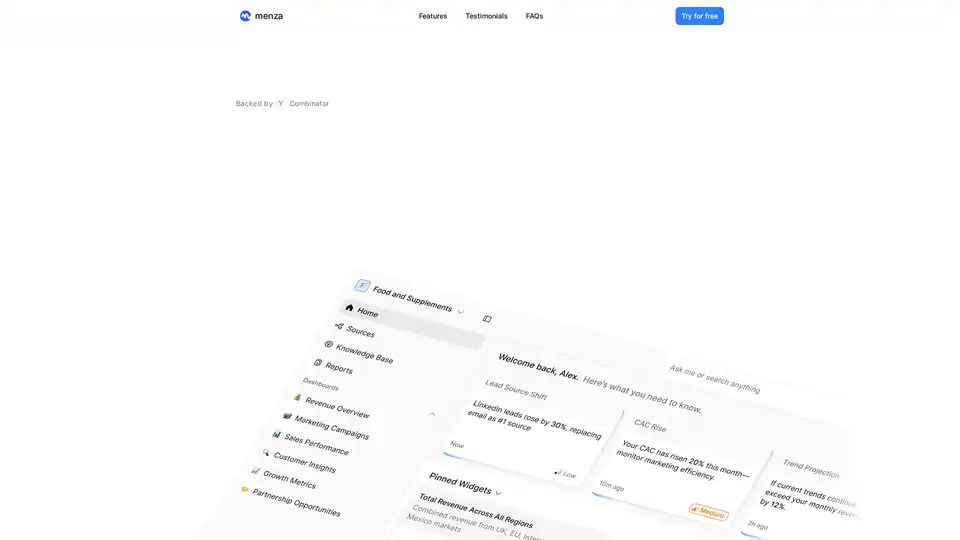
Menza is a 24/7 AI-powered data analyst for consumer brands, providing instant insights across sales, marketing, and product data without the need for a data team or waiting for technical analysis.
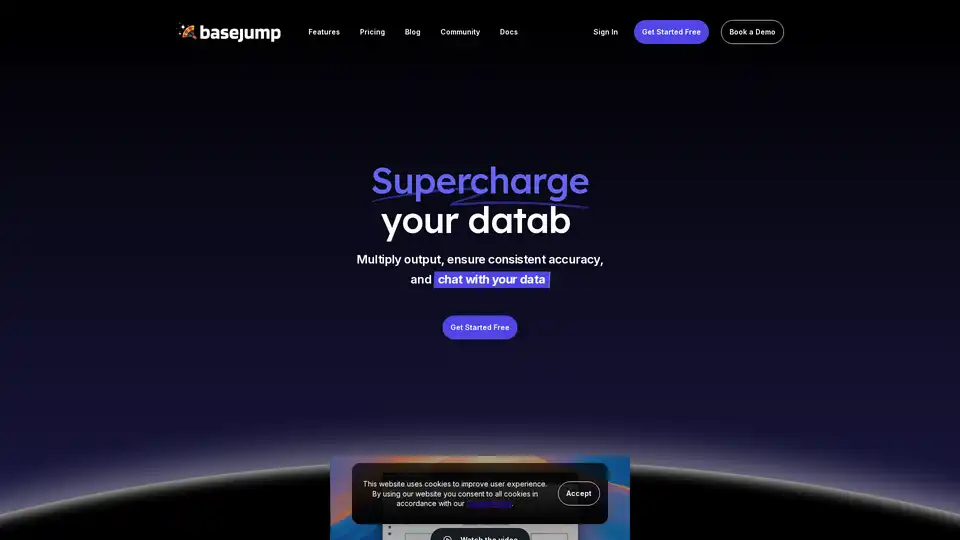
Basejump AI revolutionizes data analytics by enabling natural language conversations with your database. Get instant, accurate insights without SQL expertise through AI-powered query generation and data visualization.
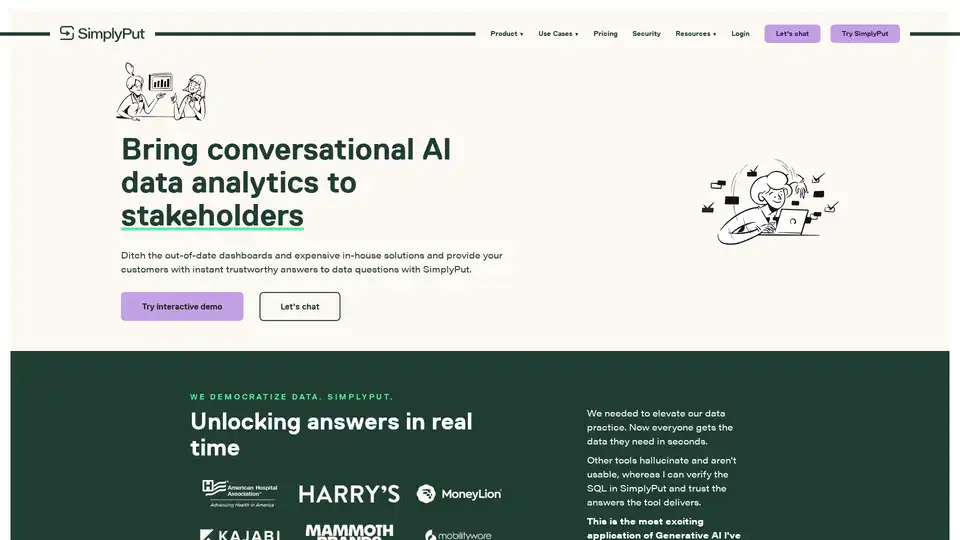
SimplyPut revolutionizes data analytics with conversational AI, enabling users to get instant, reliable answers to data questions in natural language, bypassing outdated dashboards and complex tools.
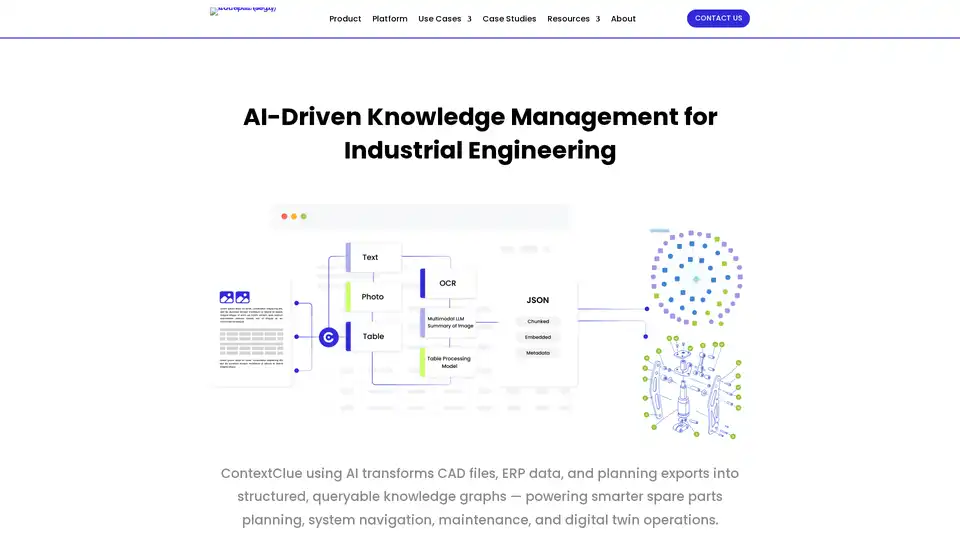
Optimize engineering workflows with intelligent knowledge management – organize, search, and share technical data across your entire ecosystem using ContextClue's AI-powered tools for knowledge graphs and digital twins.
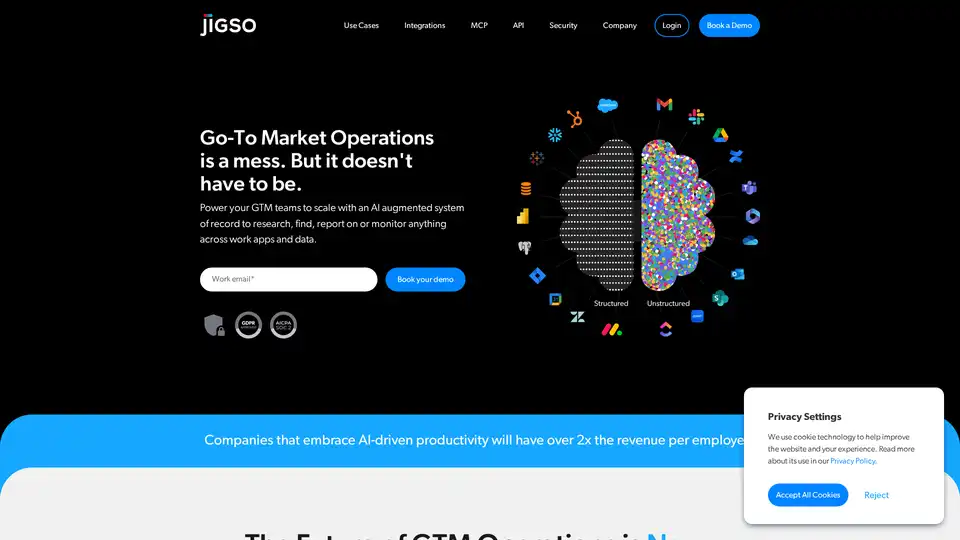
An augmented system of record for all your work apps that allows teams to research, find, report on or monitor anything. Create custom agents for any task.
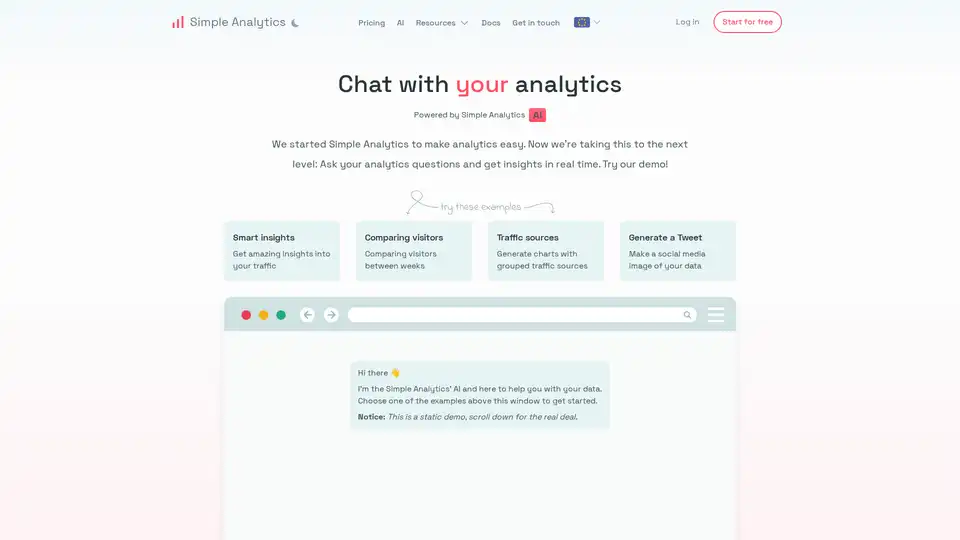
Chat with your analytics data and generate insights and beautiful charts.
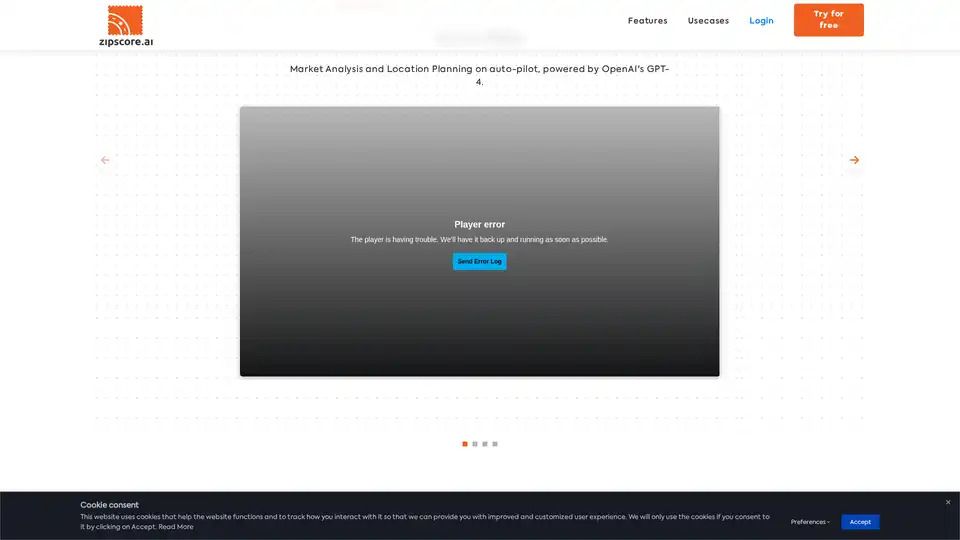
AI Co-Pilot for Market Analysis & Location Planning. Explore comprehensive census data, ZIP Code maps, and more across various geographical details.
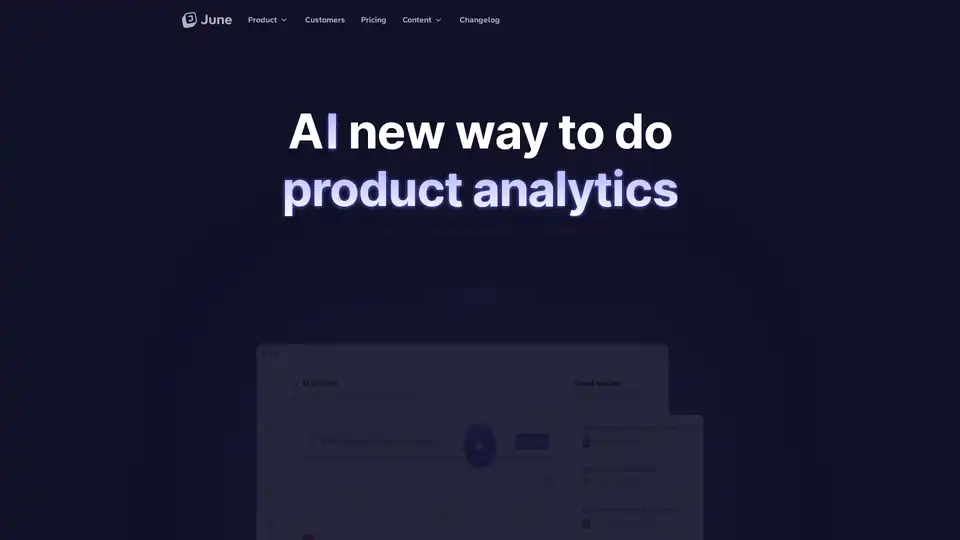
June is an AI-powered product analytics platform for B2B SaaS, enabling natural language queries with GPT-4 for deep insights into customer usage and auto-generated reports.
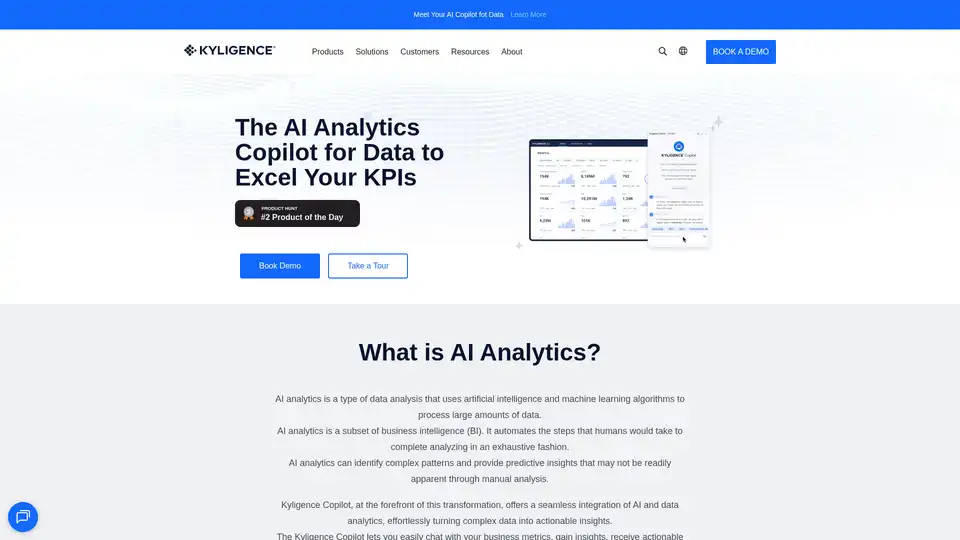
Kyligence Copilot is an AI-powered analytics platform that transforms complex data into actionable insights through natural language queries and automated analysis for business intelligence.
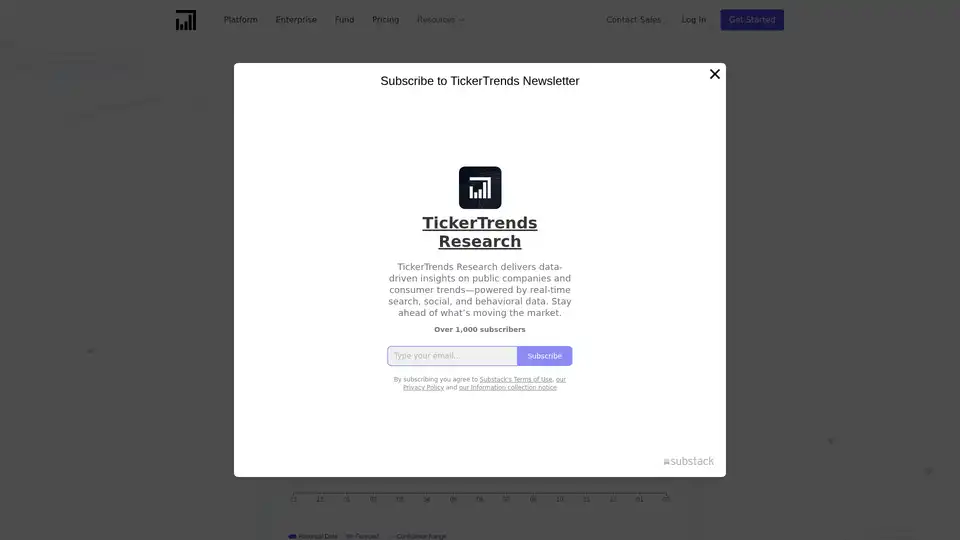
TickerTrends is an AI-powered platform that transforms consumer interest data into actionable KPI predictions, helping investors forecast company performance with precision using alternative data sources.
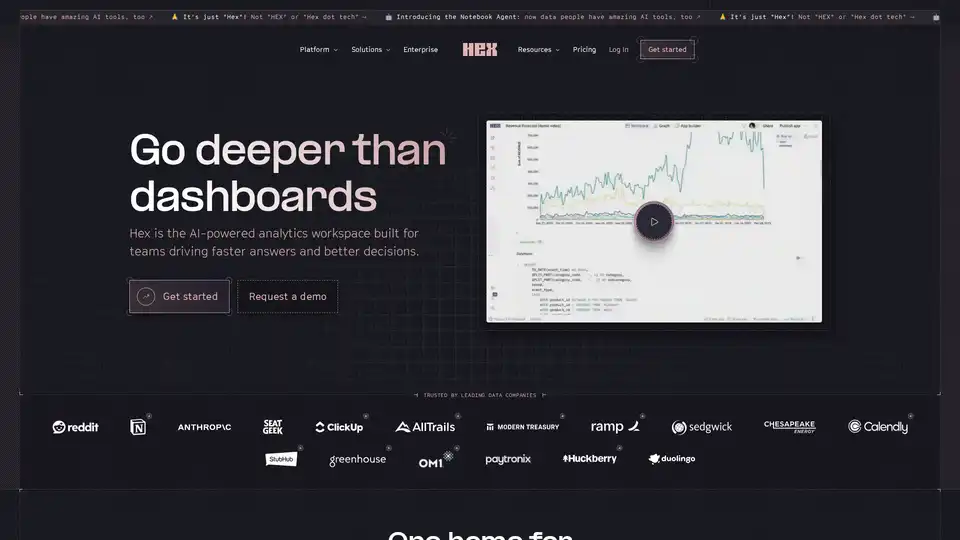
Hex is the AI-powered analytics workspace designed for teams to drive faster answers, better decisions, and collaborative data exploration with notebooks, apps, and self-serve tools.
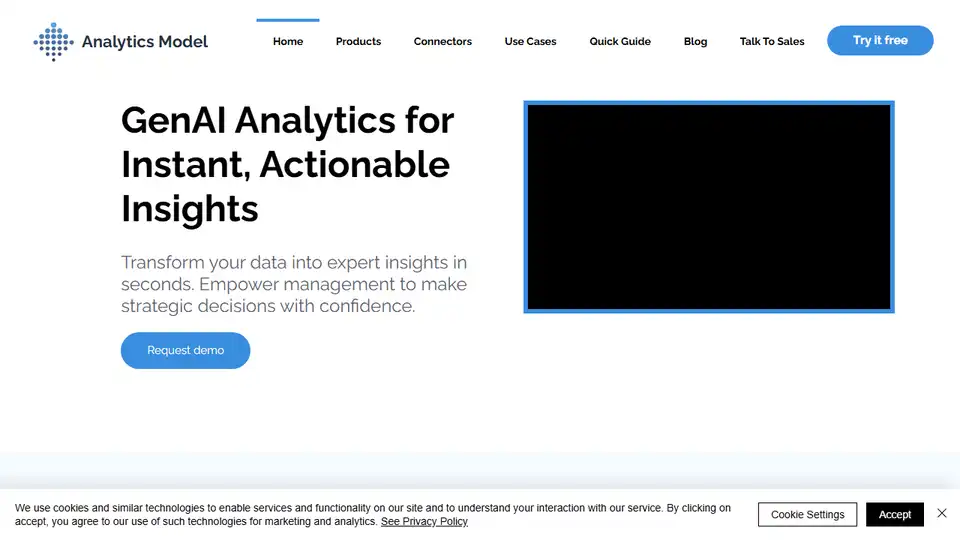
Analytics Model is an AI-driven platform that lets you query data in plain language, generate instant insights, and create visualizations. Connect to 500+ data sources and make data-driven decisions.

Formula Bot: AI-powered platform for Excel & more. Analyze, visualize, transform, clean, and enrich your data effortlessly. Join 1M+ users!
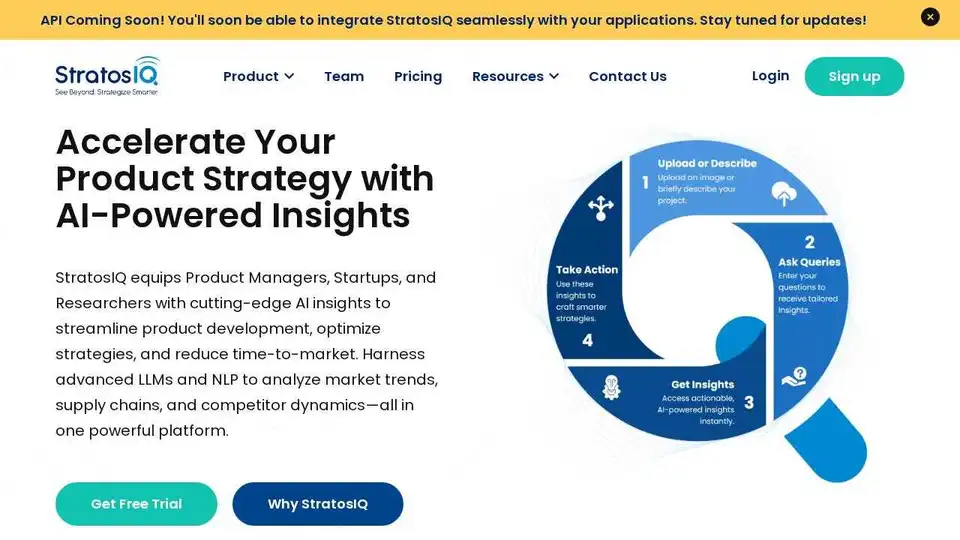
StratosIQ is an AI assistant that empowers product managers, startups, and researchers with AI-driven insights for market research and product development. Start your free trial today!
